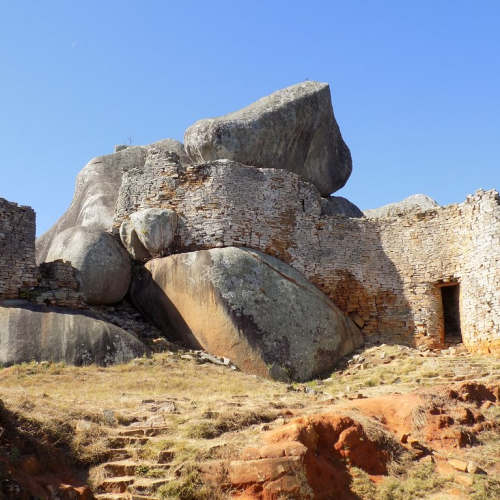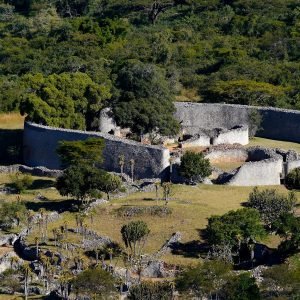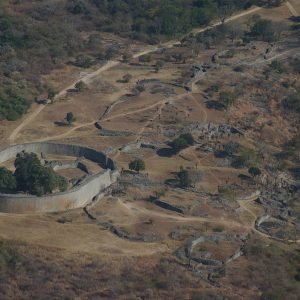Great Zimbabwe National Monument is an archaeological site in southeastern Zimbabwe, southern Africa. It was declared a UNESCO World Heritage Site in 1986 for its historical and architectural importance.
Great Zimbabwe was a major city between the 11th and 15th centuries, and was the center of an empire that extended over much of present-day Zimbabwe, as well as neighboring regions. The site is famous for its stone ruins, notably the Great Enclosure, a massive construction that served as both royal residence and place of worship.
La Grande Enclos consists of sandstone walls, without mortar, that are ingeniously assembled. These complex structures feature a unique and elaborate architecture, with carved patterns, spiral staircases and secret passages. It's amazing how ancient builders were able to construct such structures without using modern building materials.
Exploring Great Zimbabwe National Monument, visitors can discover the remains of houses, courtyards and other structures, as well as burial sites and archaeological artifacts. The site is an impressive testimony to the advanced civilization that existed in the region at the time.
In addition to its historical significance, Great Zimbabwe National Monument is also an important national and cultural symbol for modern Zimbabwe. The motifs and symbols found in the ruins have been incorporated into the country's arts and crafts, and the name "Zimbabwe" itself is derived from the Shona dzimba dza mabwe, meaning "stone houses".
The Great Zimbabwe National Monument site offers visitors a unique opportunity to discover the history, culture and architecture of ancient southern Africa. It is recommended to visit the site with a local guide for in-depth information on its significance and historical context.
In short, Great Zimbabwe National Monument is a fascinating archaeological site that bears witness to the ancient civilization that flourished in the region. Its spectacular stone ruins, unique architecture and cultural significance make it a must-see destination for those interested in the history and culture of southern Africa.




